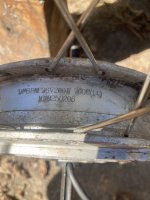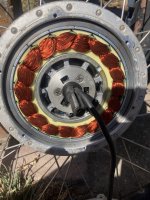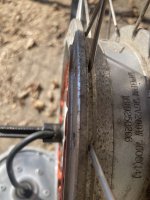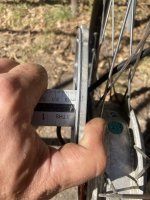Cheers AW. I’ve always coveted a phase runner, and playing around with VESC was just about inevitable at some time, as in there was eventually going to be a project that demanded it. Although I always imagined it’d be for the small form factor, never that it’d be for sensorless capability.
I’ll order one, and hope it doesn’t take too many hours to tune.
The PRv6 and PRv1 I have here both autotuned the Ultramotors I've used with them (one from a Stromer, two from A2B's), and I haven't had to do any other tuning to get them to drive the SB Cruiser trike. I'm sure I could tinker with the tuning and make it "better" but I prefer not to mess with it if I don't have to.

There *are* some issues with how they do things that I would like to change, but it's probably just their nature, vs my desires. (there's a recent ongoing thread on that somewhere).
I use them with hall sensors, but have also used them sensorless (including on a GMAC), and it's about like any ohter sensorless...if you're already moving in the direction you want to go, it's probably going to startup ok. If you're sitting still and try to get moving, they get confused as often as not.
I've never used the VESC, so no idea how good it's autotune or sensorless features are, other than various posts around here that describe them.
Unless it’s feasible to add hall sensors to these motors instead. It’s tight in them, I don’t know that there’s sufficient clearance.
I’ll post pics and measure. Perhaps you could then tell me what you think WRT adding hall sensors?
Installing them isn't likely too difficult, but getting the wires for them out might be tough--you'd probably have to modify the axle on the other side of the motor to pass them out there, so you don't weaken the axle on this side any further with a deeper channel to fit them in with the phase wires.
You can look at other sensored hubmotors to see how and where they placed their halls relative to the stator teeth for various numbers of teeth vs magnet poles, and see if you can just copy one of those. Notching the teeth to fit the halls in is probably the hardest part, avoiding damage to the windings, etc., you'll probably have to pull the stator out of the magnet rotor/bell to do this, if they didn't notch the stator laminations for halls at the factory (probably not).
I don’t know if basic trapezoidal controllers are worth considering. The motors were removed from service due to sheared nylon teeth - not munched, snapped clean off and embedded in the sun gear - and I intend to push them hard, as left side mid-drives with 3:1 reduction, hauling 200kg up a hill. I’m confident there’ll be adequate torque if it’s possible to fine tune them up to the tooth shearing point. I need to buy new nylon gears anyway, so will order spares for testing.
Sheared off teeth is probably from shock loads--sudden full application of power. That can be minimized by keeping a tiny amount of phase current always present to keep the teeth "wound up", and ramping up phase current from that point to whatever drive current you're using at that moment.
Munched is usually from plastic that got warm enough to deform first, then bits come off and get in the way of other teeth and mess up lots of stuff.
Really hot plastic can just strip all the teeth off, turning them into cylinders instead. :/





